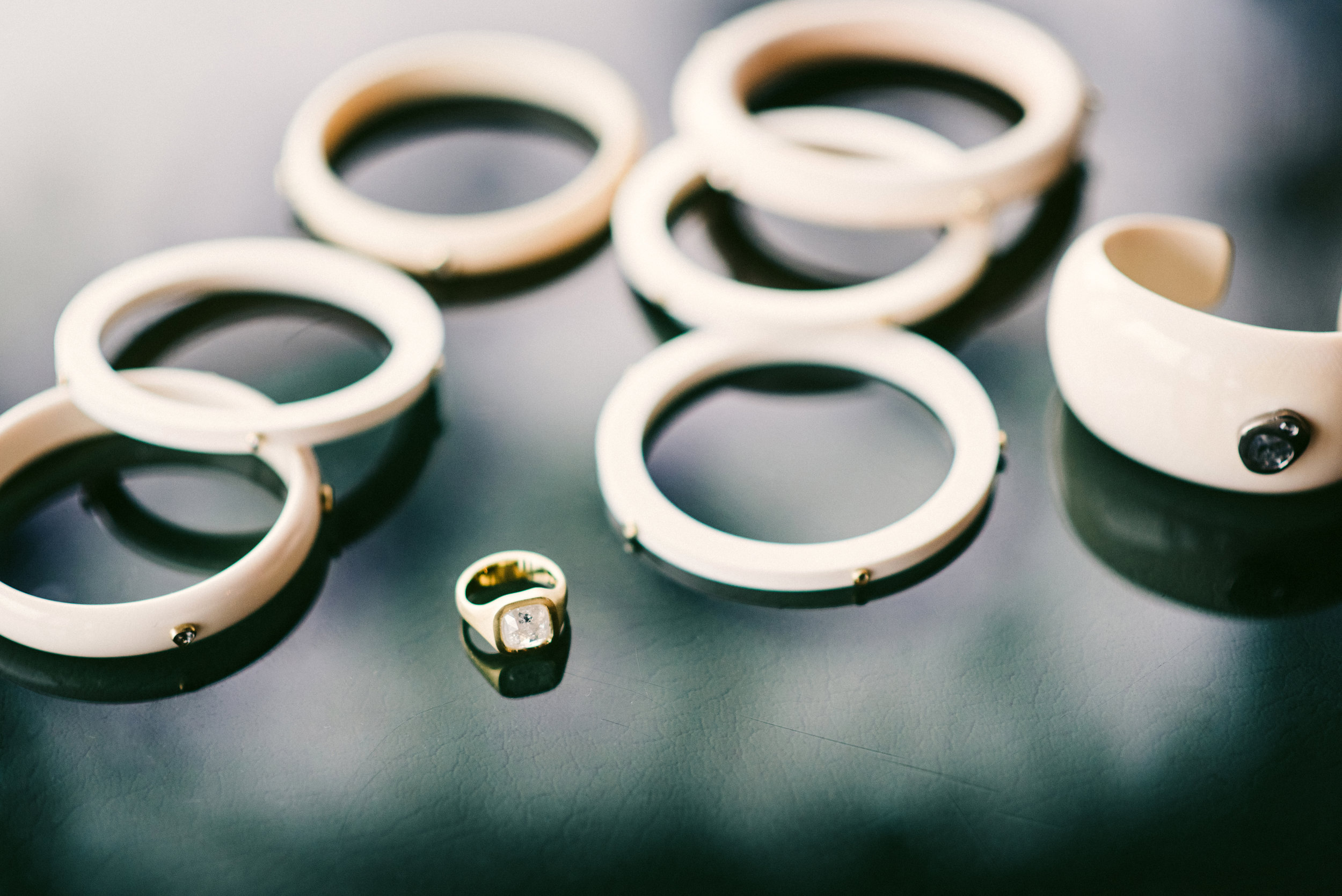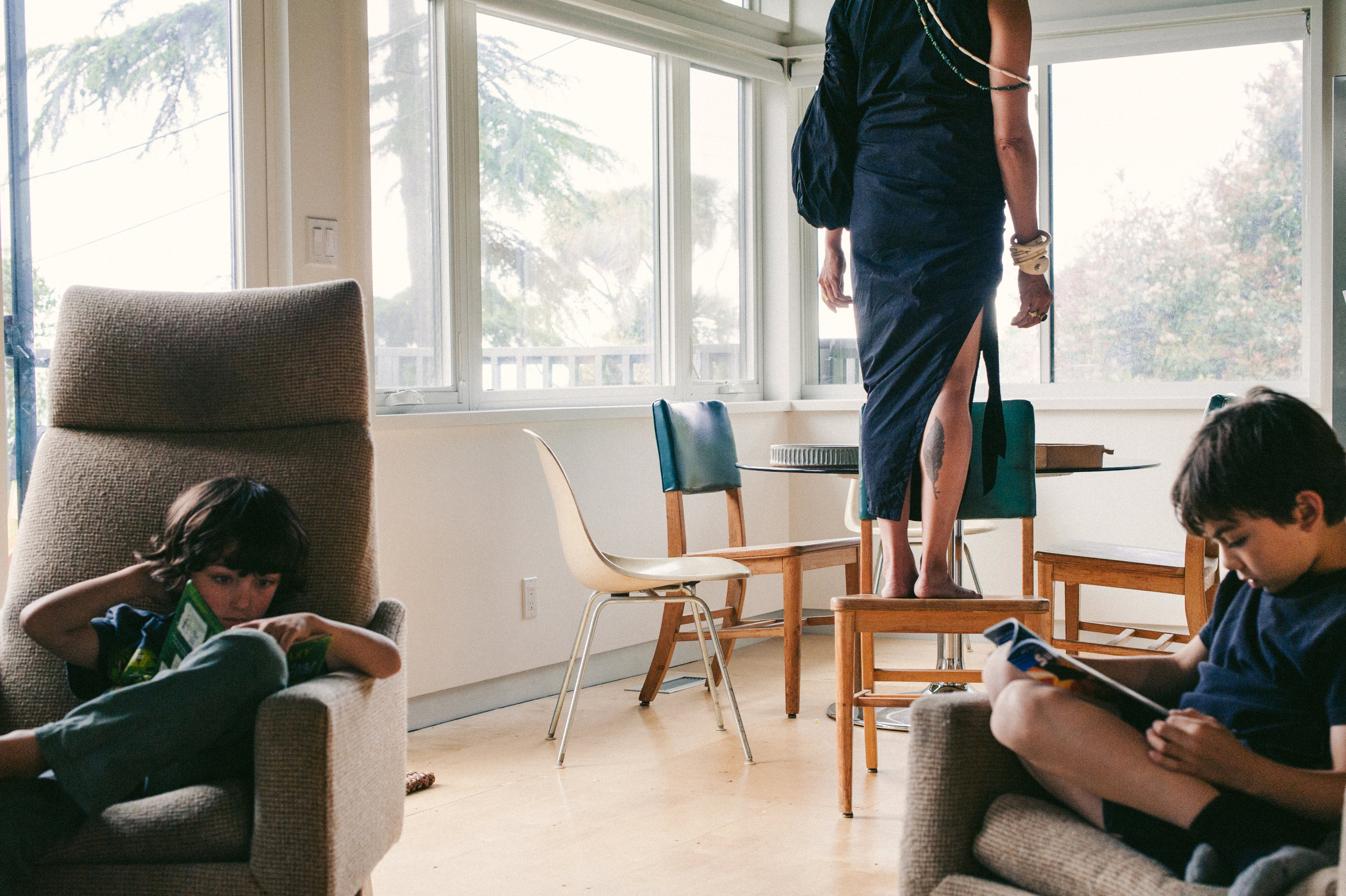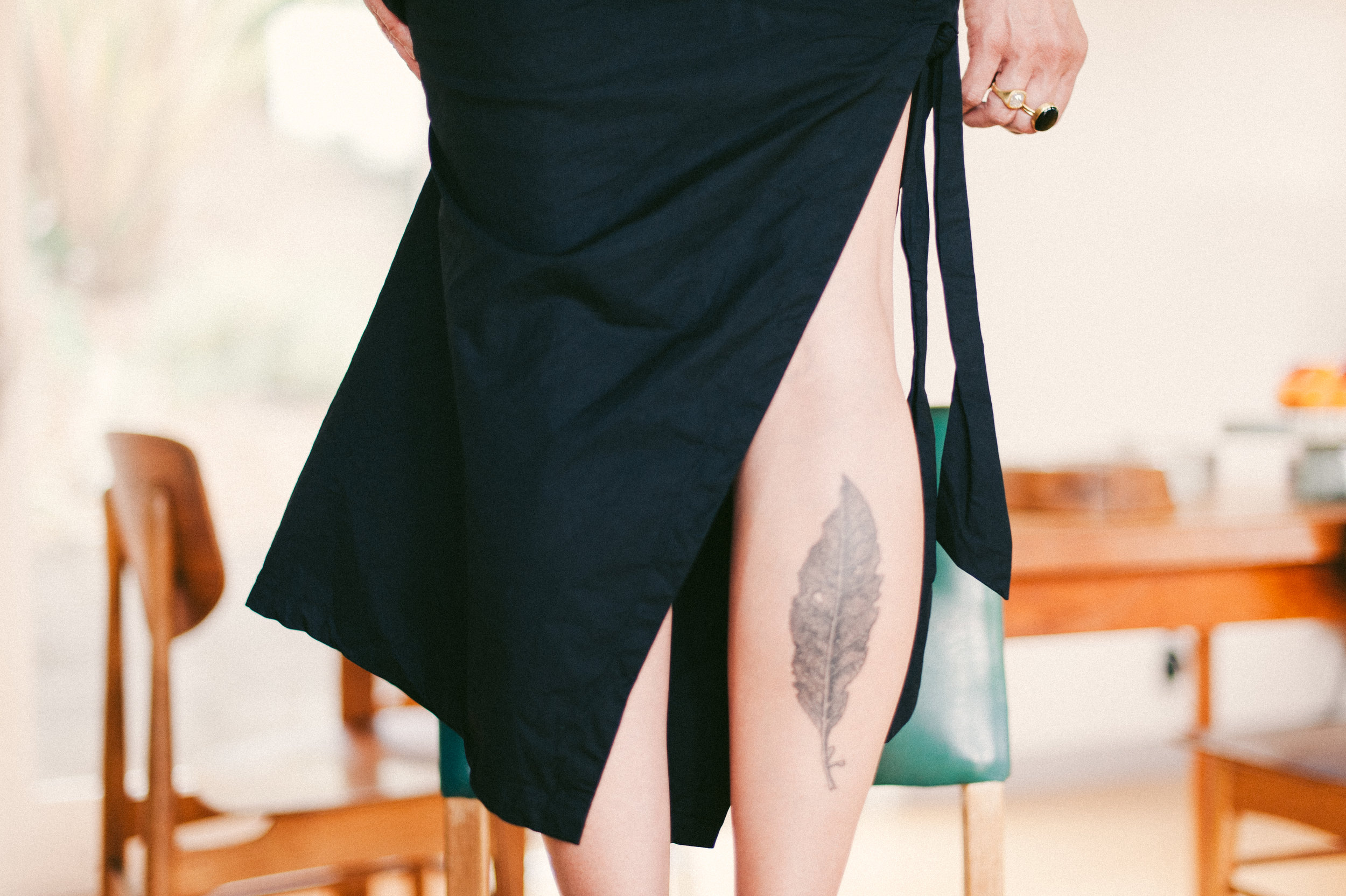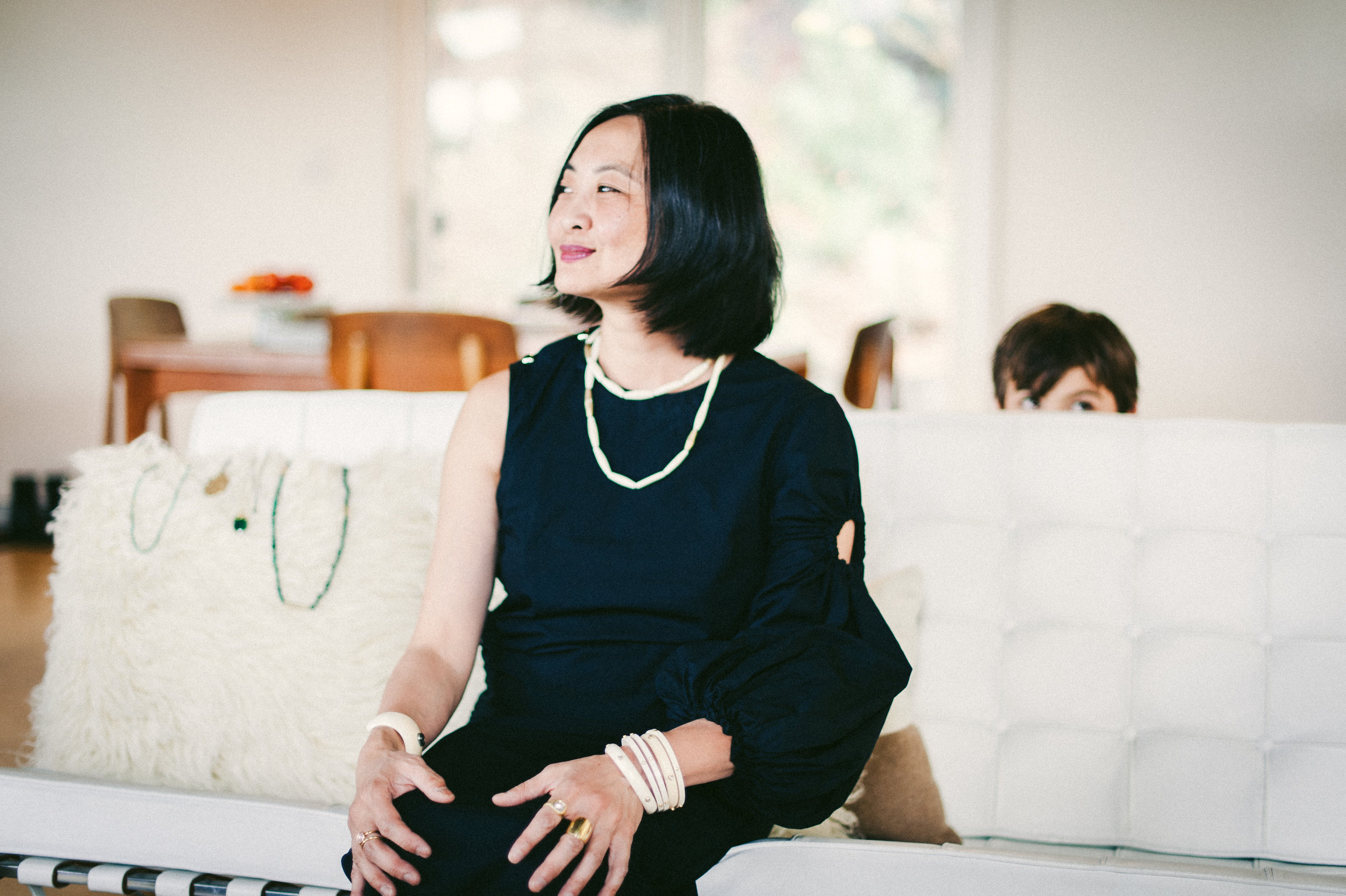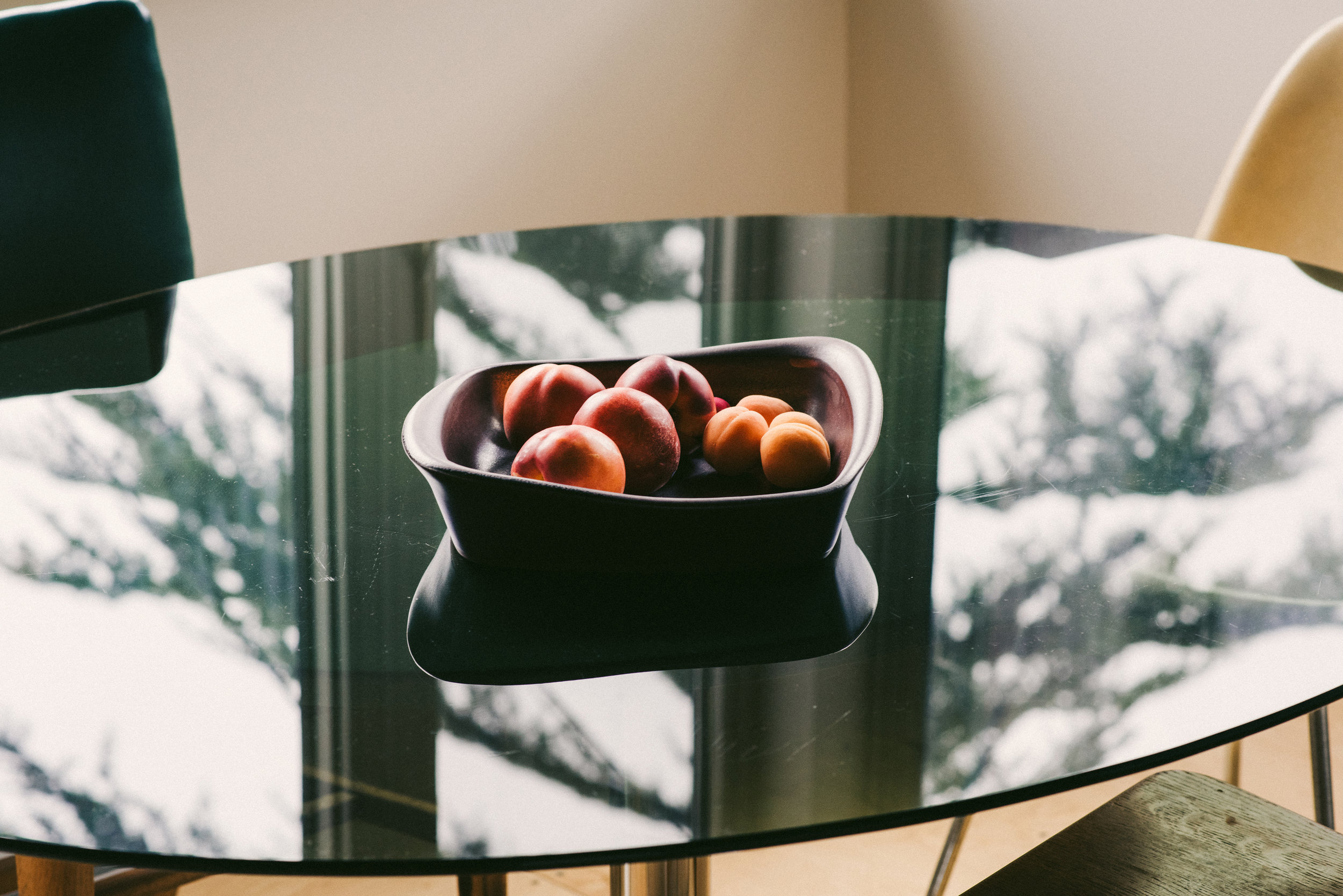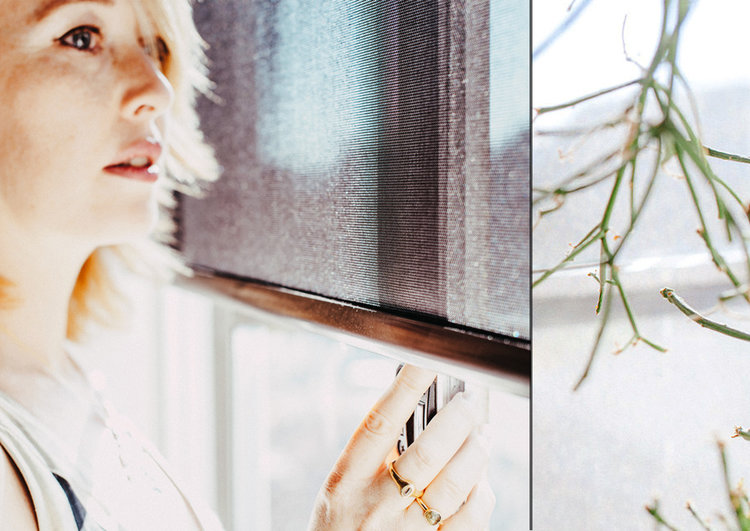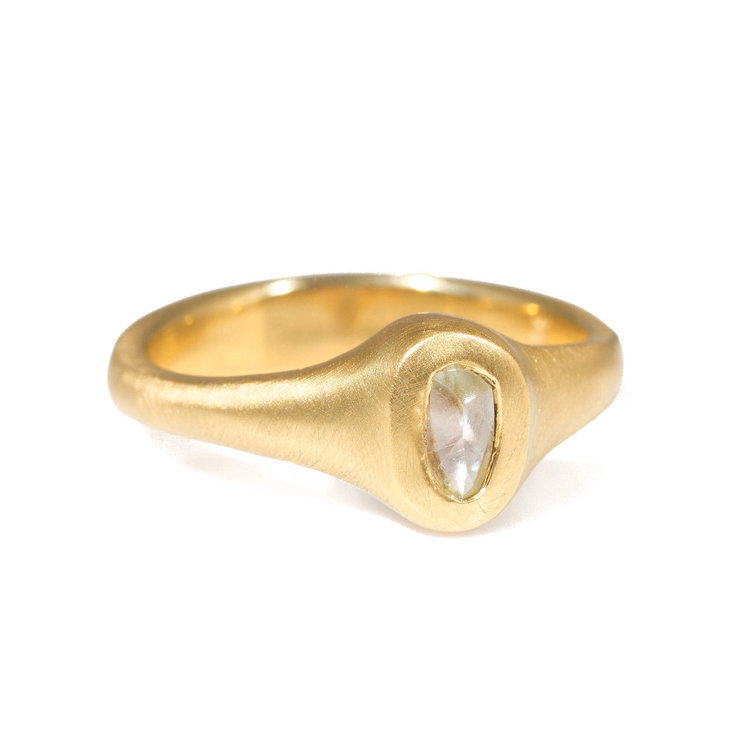Guest-written by Jill Blue Lin
Photography by Cynthia E. Wood
Jill Blue Lin is a UX Designer and Researcher, and an aspiring potter. Oval ceramic fruit bowl by Jill Blue Lin. Emerald, Tourmaline Necklaces and Bone Bangles by April Higashi.
Introduction by April Higashi
A group of parents gathered around tiny tables; some were precariously balanced on doll-sized chairs at our 2 1/2 year old children’s preschool orientation. It was a poignant time to be handing off our babies to go to school; they were still so little. I looked around at all the other nervous parents. Then, being me, I noticed a stylish woman with a ring on her hand that looked perfect on her. The context of the ring and who she was just worked. Later, we struck up a conversation and only then I realized her ring was one of my pearl rings she had gotten at my gallery. Jewelry, art, or something beautiful in the right context can make you stop and take you by surprise or even want to make you know someone. This was one of those moments. Jill and I became friends along with our exes and built a community around our kids. It is certainly not every day that one of my pieces connects me with a treasured friendship, new life stories and how my jewelry became a part of those stories.
Biwa Pearl Ring by April Higashi. Jill’s first piece from Shibumi Gallery.
Real Women Buy Their Own Jewelry
The short version is this: when our baby was 8 months old, my husband and I decided to separate, and he moved out. (The longer version belongs in a different story which I might write on another day, but this story is about jewelry.) And what followed then was the hardest period of my life.
I’d just returned to work from maternity leave, and my team and my manager were difficult. Work life was a daily battle. At home, I hadn’t yet figured out how to be a mom, let alone a single mom. And to top it all off, I hadn’t slept four solid hours since my son was born.
Yet, most disconcerting of all was the condition of my house. I could eke out the mortgage payments by myself - I’d practically been doing this for years - but major repairs were out of the question. Everything in the house needed fixing, but all of it had to wait.
We have a mid century modern home in the Berkeley Hills. Built on a very steep hillside, it was the most rundown house on a beautiful street. With partial views of the Golden Gate Bridge and open, light-filled rooms, the house had potential; but the siding was so worn I could pull it off with my bare hands in certain spots. The cheap aluminum windows rattled whenever the wind blew. Under the 1970s fake wood paneling, the walls weren’t insulated, so turning up the heat was tantamount to trying to heat the entire Berkeley Hills. I couldn’t afford a large utility bill, so we were often cold.
Whenever it rained, I dragged out my mixing bowls to catch the water from the leaks. Some days, I came home to find they had overflowed and water had pooled everywhere: the floor by the front door was soaked, water dripped from the ruined plaster ceiling and ran down the wooden stairs. As I mopped up the water and squeezed it into the sink, any remaining equity in the house seemed to disappear with that water down the drain. One evening I came home and found a California newt swimming in one of the bowls. I marveled at how he could possibly have gotten there; then I scooped him up, freed him in the backyard and watched him disappear into the dark.
And day after day, I squared my shoulders and did my best. I triaged, and only did what absolutely had to be done. I worked with a relentless focus, taking breaks to visit the pumping room three times a day. I slept whenever I could, saw my friends, cooked, and exercised.
When I look back on that time, I am astonished we made it through. But my ex proved to be a loving father who continued to help take care of our baby every day, who took out the garbage, and would straighten-up the house whenever he came by. And so many others helped. Friends visited, invited me over and fed me. A coworker recruited me to join her team, and suddenly my work life was no longer a battle. A neighbor lent me her gardener to work on my overgrown yard, and then the house looked a little less crappy from the outside.
Memories of that period are a muddy, sleep-deprived blur, but I do remember that I made time and space to enjoy the baby. In our cold house, we would read and play in bed --underneath warm blankets!-- and I thought he was the most beautiful creature I had ever seen. Somehow, we were happy.
Bit by bit our new life became easier. I got a promotion, a raise, and a meaningful tax refund. The rainy season was over and the weather was warm. The baby started sleeping through the night, and once he did, it was as if a haze had been lifted from the world. One morning I woke up after a full night’s sleep and noticed that my heart no longer lived in my throat: things no longer felt so desperate.
With my newfound ease, on a warm spring day I walked into Shibumi Gallery. I had seen April’s work years ago. With its modern lines and organic shapes, her jewelry is so beautiful that whenever I’m in its presence, every fiber of my body screams “WANT!” I had always meant to ask my husband to buy me one of her pieces someday when we had extra money, but that day never came. I decided to buy myself a ring. What I really craved was a huge diamond slice. But I had a house to fix and a baby to support, so what I got instead was a large pearl ring with an oxidized silver band. It was beautiful and it was enough.
April wasn’t in her gallery that day; we met sometime later at our kids’ preschool. As she tells it, she looked across the room, saw me and thought “That ring looks great on her!” before she recognized it as one of her own. We became fast friends— over the years we’ve watched one another’s kids, cooked for each other, and spent holidays and vacations together. For almost six years, we’ve been building a community around our children.
My family is doing really well right now. My son is thriving and I have a different job. My ex and I co-parent so well that people have asked if we planned it this way all along. The house is mostly done -- when I manage to straighten up, it looks like Sunset Magazine in here. And when it rains, I no longer have to get out the mixing bowls. A warm, weather-proof house, a solid roof over my child’s head -- these still seem like miraculous luxuries. Every once in awhile, I buy myself a piece of jewelry because I can. And because we all need a little beauty now and again.




